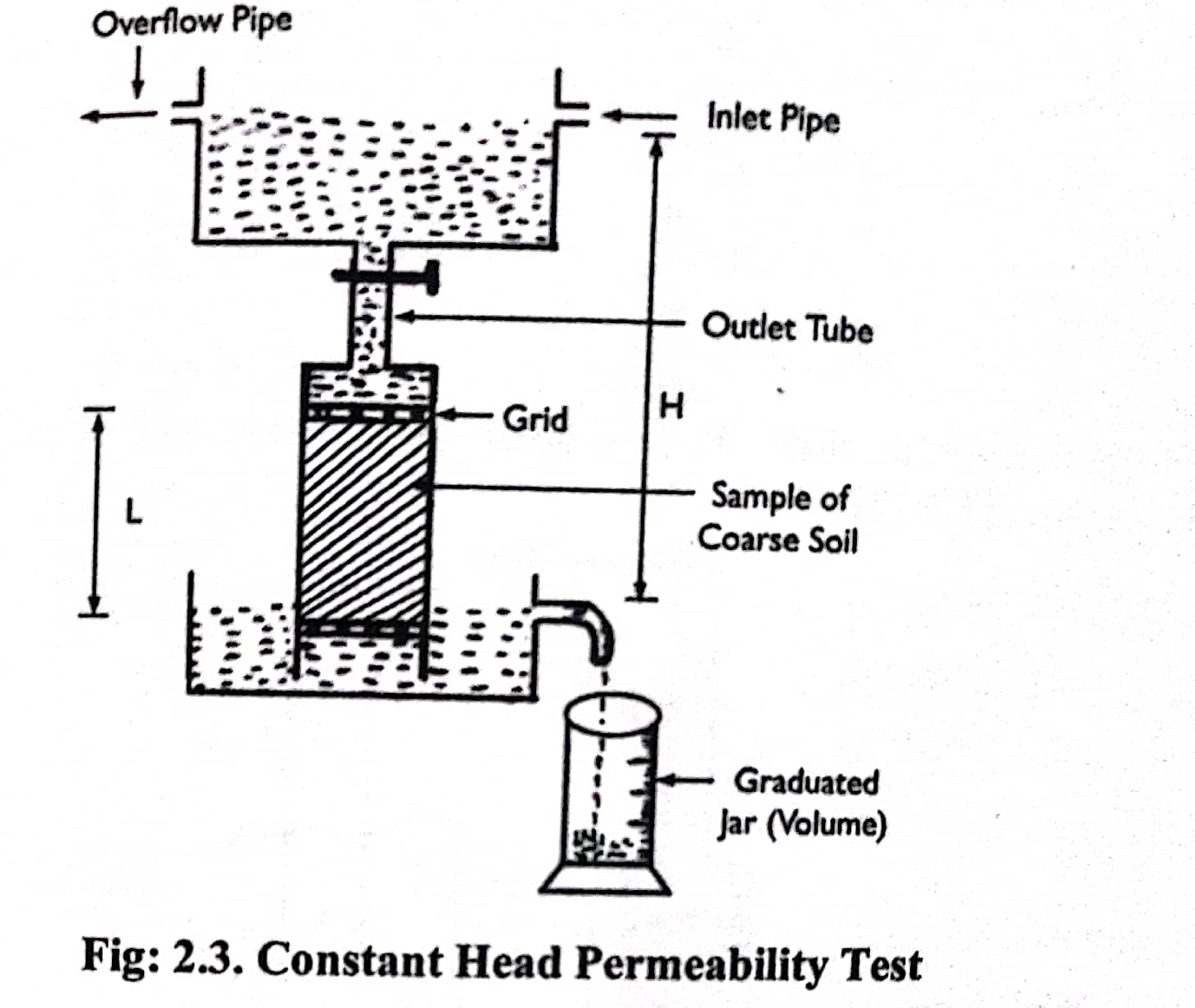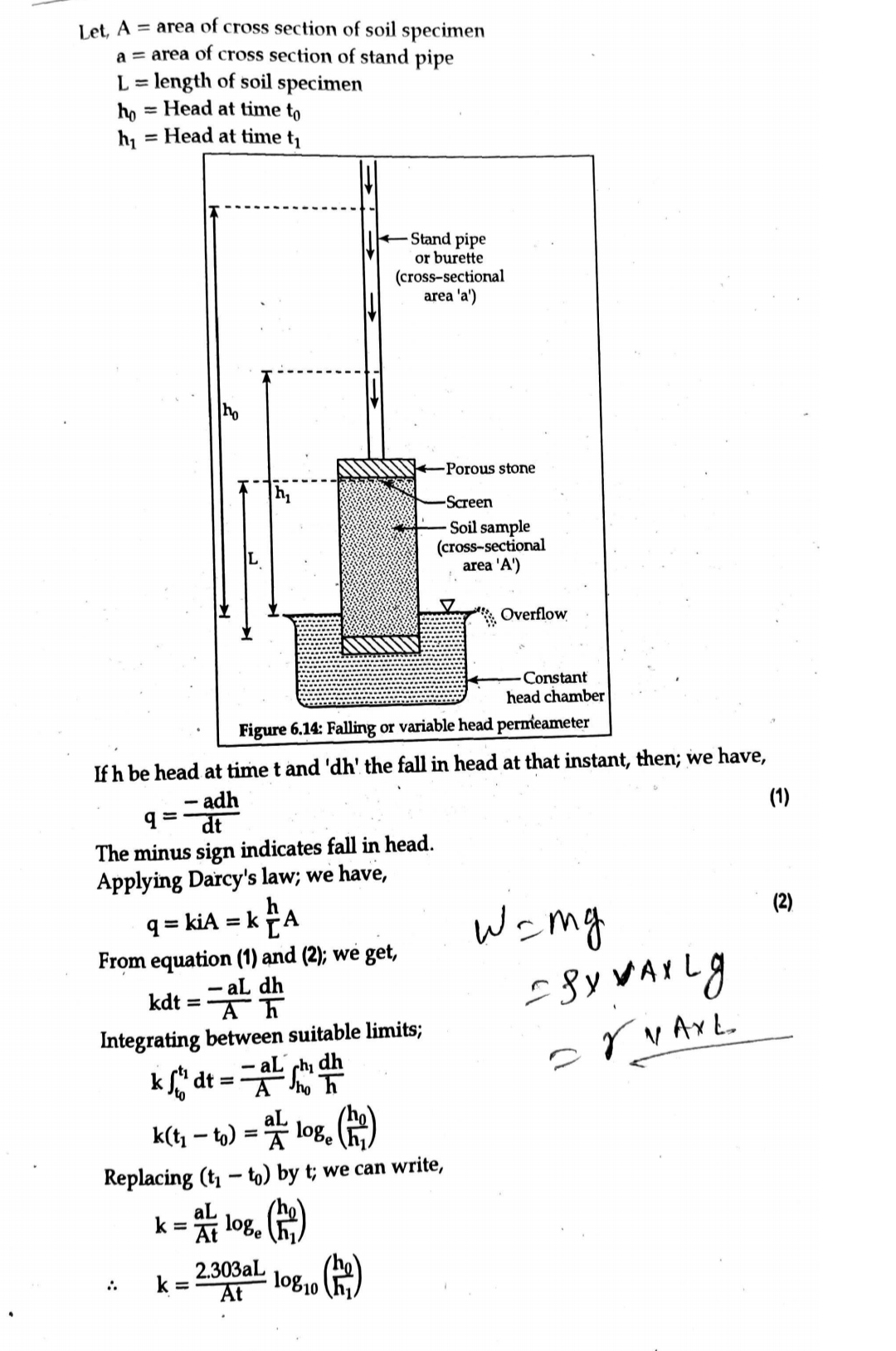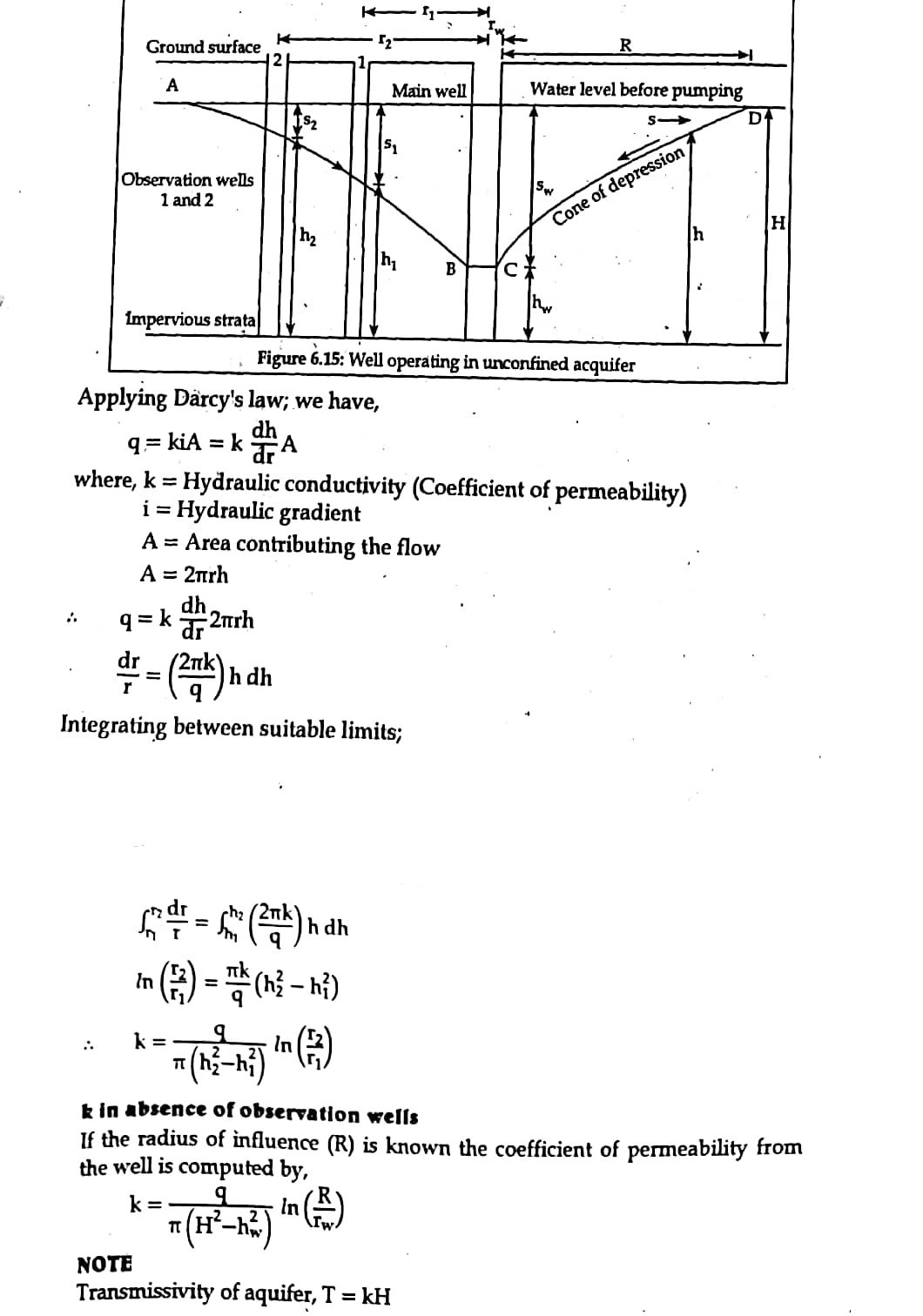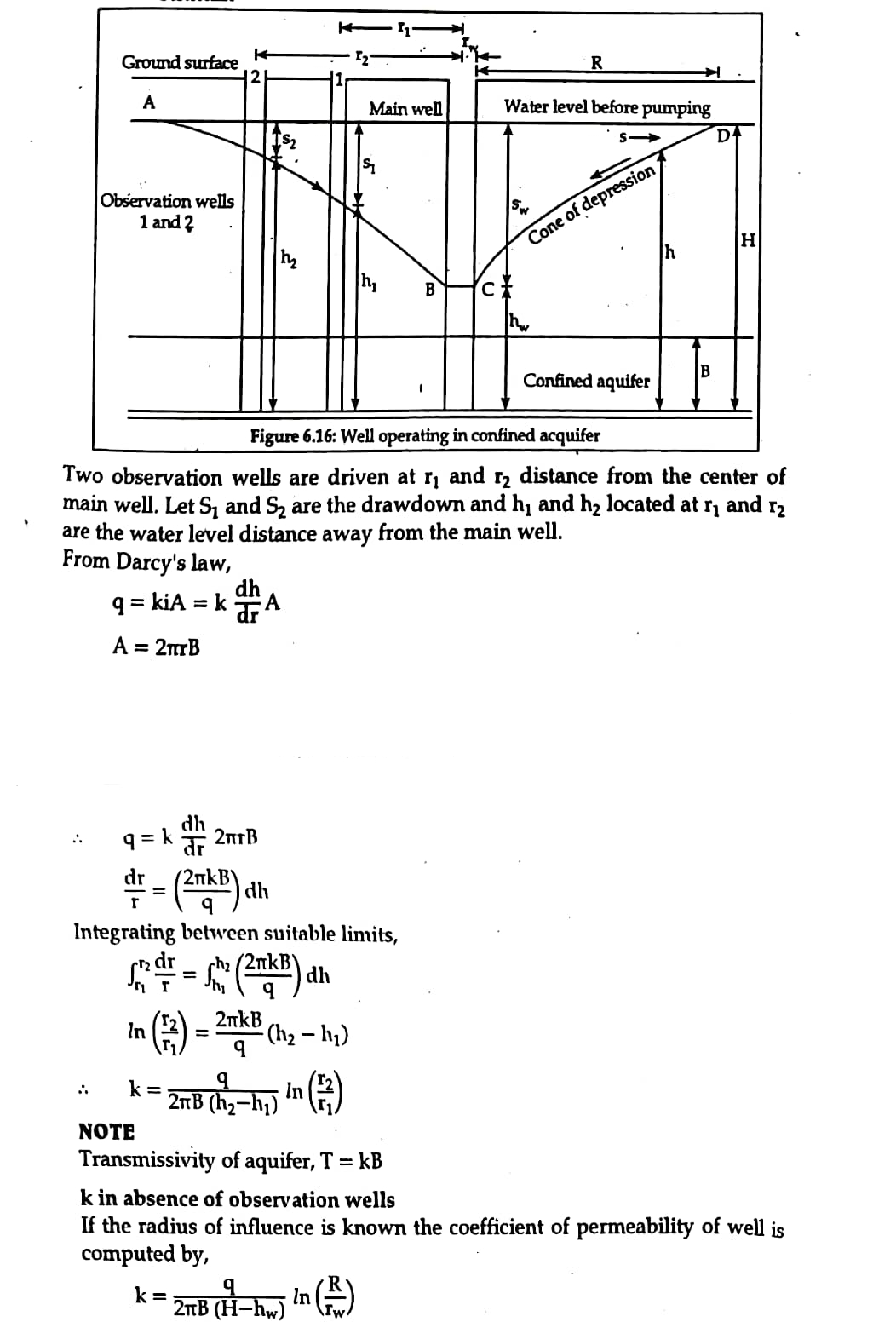The coefficient of permeability can be determined by the following methods:
i) Laboratory methods
- Constant head permeability test
- Variable head permeability test
ii) Field methods
- Pumping-out tests
- Pumping-in tests (bore hole tests)
Constant head permeability test:
This test is more suited for coarse grained soil such as gravel, coarse & medium sand.
Above figure shows a constant head permeameter that consists of a vertical tube (cylinder) containing soil sample. The diameter and height of the cylinder (permeameter or tube) can be of any convenient dimensions. The constant level of water is maintained in a small water tank by providing over flow tube.
Procedures:
1. A permeameter or cylinder is cleaned and dried.
2. Coarse grained soil sample which is to be tested is placed in cylinder.
3. Vertical cylinder containing soil sample is provided with top & bottom grids (screen, pores plate) as shown in fig: 2.3.
4. Smaller water tank is attached with cylinder with the help of vertical tube (outlet tube) as shown in above figure.
5. Water is allowed to pass through soil sample and water after passing through soil sample in a particular time, t is collected in a graduated jar from where quantity of seepage water in terms of volume is measured.
6. With the help of Darcy's law coefficient of permeability of coarse grained soil is calculated as below:
`q=k*i*A`
or, `k=q/(i*A)`
Where, `q` is the discharge per unit time
`A=`Area of cross section of soil sample
`i=`Hydraulic gradient
`i=H/L`
Thus,
`k=(Q/t)/((H/L)**A)`
or, `k=(QL)/(H A t)=(qL)/(A H)`
Falling head permeability test:
Falling head permeability test is more suited for fine grained soil such as silt and clay.
Above figure shows a following head permeameter which consists of a vertical cylinder (Permeameter) of c/s area, A. A transparent stand pipe of c/s area, a is attached to the test cylinder. The test cylinder is kept in a container filled with water.
Procedures
1. Permeameter (cylinder) is cleaned and dried.
2. The fine grained soil sample is placed in side cylinder and then two screen (grids) are fitted as shown in fig: 2.4.
3. A transparent stand pipe is connected with cylinder at top.
4. Before the commencement of test the soil sample is saturated by allowing the water to flow continuously through the sample from the stand pipe.
5. After the saturation is completed, the stand pipe is filled with water upto a height of and a stop watch is started. Let initial time be `t_1`
6. The time, `t_2` when the water level drops from `h_1` to `h_2` is noted.
7. The coefficient of permeability of soil sample is found out by following calculations:
FIELD METHODS :
1. Pumping out tests:
The tests can be conducted in both unconfined and confined aquifer. An aquifer is a water bearing stratum in natural ground formations. If it overlies an impervious stratum and the water table is free to fluctuate, it is called unconfined aquifer. On the other hand, if the aquifer is bound by impervious strata both at top and bottom, it is called confined aquifer.
1.1 Pumping out test in unconfined aquifer
Figure below is a schematic diagram illustrating pumping out test in an unconfined aquifer.
Let `r_w` = Radius of main well
`R` = Radius of zero drawdown as maximum radius of influence
`h_w` = Depth of water in the main well, during pumping, measured above impervious layer
`H` = Height of initial water level above imperious layer
`q` = Rate at which water is pumped out of well.
Two observation wells are driven at `r_1` and `r_2` distance from the center of main well. Pumping is adjusted that the rate of pumping is equal to the rate of yield. At the observation wells `S_1` and `S_2` are the drawdown located at `r_1` and `r_2` distance away from the main well.
`h_1` and `h_2` are the water levels in two observation wells located at `r_1` and `r_2` distance away from the main well.
1.2. Pumping out test in confined aquifer
The figure 6.16 is a schematic diagram illustrating pumping out test in the confined aquifer.
Let, `q=`Discharge or rate at which water is pumped out of main well
`r_w`= Radius of main well
`R `= Maximum radius of influence
`h` = Depth of water in well, measured above bottom impervious stratum, during pumping.
`B` = Height of initial piezometric surface above bottom impervious stratum
2. Pumping in tests
2.1) Open end tests
An open end pipe is sunk in the strata and the soil is taken out of the pipe just to the bottom. Clean water, having température slightly higher than the ground water, is added through a metering system to maintain gravity flow under constant head. The permeability is calculated from the following expression,
`k = q/(5.5rh)`
where, h = differential head of water
r = Radius of casing
q= Constant rate of flow
2.2) Packer tests
An uncased portion of the drill hole or a perforated portion of the casing is used for performing the test. In case the test is performed during drilling a top packer is placed just inside or below the casing. Water is pumped in the lower portion of the hole. The length of the packer on expansion should be five times the diameter of hole. Testing is started from the bottom of the hole and continued upwards. Coefficient of permeability is determined from the following expression:
`k = q/(2pi*Lh) * log_10(L/r); L >= 10r`
`k = q/(2pi*Lh) * sin h ^ - 1 * L/(2r); 10r > L >= r`
where, L is the length of portion of hole tested.

 Guest
Guest


